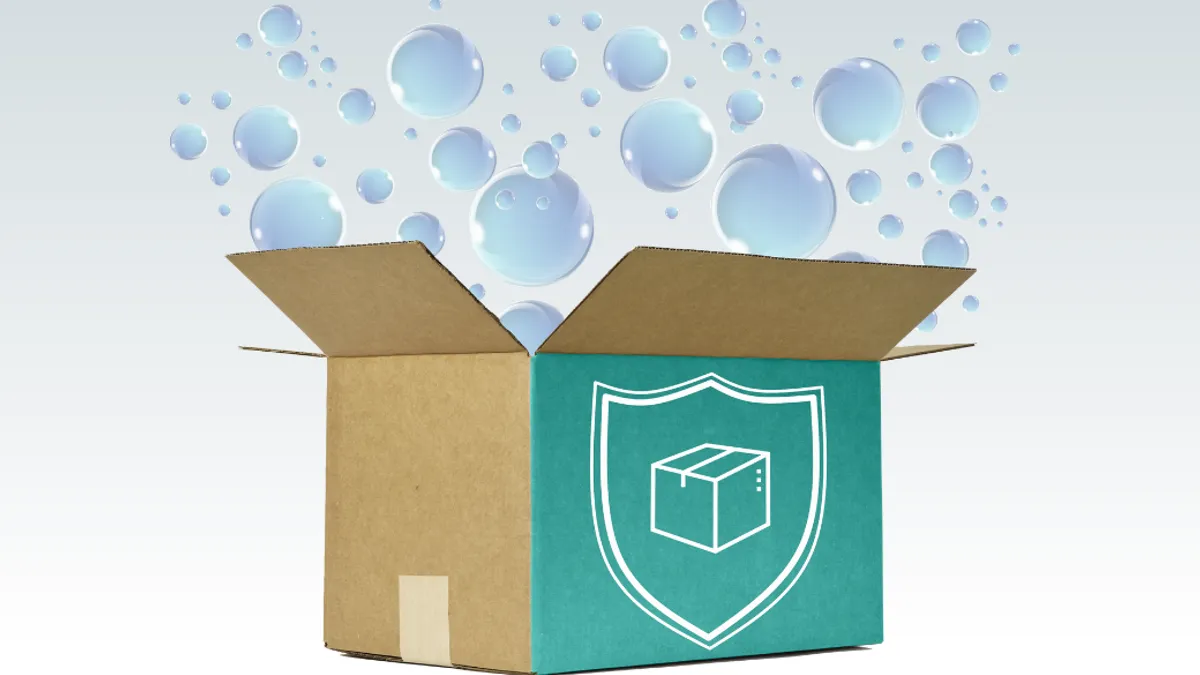Supply chains are under extreme pressure to become more efficient, secure and predictable in today’s global economy. As the “small world” grows smaller and more firmly interconnected, the need for fast, nimble supply chain operations just intensifies.
Amidst all the new technologies and solutions being explored and implemented across supply chains, one thing has remained constant: the enduring relationship between product packaging and distribution, and the superb protection corrugated boxes provide for products traveling from end to end – manufacturer to end user.
Corrugated has been used for over 100 years to transport products and prevent them from being damaged along the way. Engineered to withstand the rigors of shipping and handling yet beautifully custom designed to enable extra protective, merchandising and branding opportunities. In e-commerce, home delivery makes “pretty” and functional packaging more important than ever with the shipping box sometimes serving double duty as the primary product package.
How does corrugated packaging maintain its crucial role in supply chains and world commerce across the years, supporting efficiencies even as requirements grow more complex?
Engineering and design
Before a product makes its way into the hearts and minds of consumers, it has to arrive in perfect condition. Corrugated packaging combines structural rigidity with cushioning qualities to protect contents from damage. One reason it works so well is in its basic construction, which uses a middle layer of fluting to absorb impact.
These flutes are key to corrugated’s protective qualities. The arches form rigid columns, capable of supporting a great deal of weight while cushioning the box contents. The flutes also serve as insulators, providing some product protection from sudden temperature changes. Corrugated’s cushioning quality is matched by its stacking strength, preventing damage in transit.
Using innovative designs, boxes can also be right-sized to fit any product and made to deliver extra functionality along with branding and merchandising benefits. Think of smartphone and computer boxes – with nooks and crannies custom-built to contain parts and components, instruction manuals and other items. On top of that, corrugated boxes can be printed with attractive graphics that promote a brand, without impacting their functionality in the supply chain.
Sustainable from the start
Today, sustainability is a must. Corrugated packaging is made from a renewable resource – trees that are grown on sustainably managed farms. And at the other end of its life cycle, corrugated is supremely recyclable – with a 90+ percent recovery rate that has endured for over a decade and 52% average recycled content.
The corrugated packaging industry conducts regular life cycle assessments (LCAs) to quantify the environmental impact of corrugated packaging. The studies estimate impacts to land, air and water based on the circular life cycle of an average US corrugated cardboard box from raw materials to box manufacturing, through distribution/transportation and use, to end-of-life.
The latest LCA1 was released in October 2023. Most notably, the study demonstrated that the corrugated industry has reduced its greenhouse gas emissions by 50% since the industry’s first baseline LCA in 2006.
More companies today are being required to report certain data regarding their environmental, social and governance (ESG) performance. Companies tracking environmental impacts report on three types of emissions: Scope 1, direct emissions from company facilities; Scope 2, power and energy emissions and Scope 3, indirect emissions related to materials used, transportation and other activities generated outside of their own walls. Packaging is in this Scope 3 area of interest.
The corrugated industry LCA may provide useful information for companies’ ESG data. The report now includes a tool to help companies quantify Scope 3 emissions related to packaging. The new tool identifies the factors to be used for industry-average containerboard, industry-average corrugated products, such as boxes and displays, as well as for 100% recycled containerboard and 100% recycled corrugated products. The data in the table allows product manufacturers to report indirect emissions generated by using corrugated packaging and containerboard in their operations.
Conclusion
Sometimes the original solution is the right one. Corrugated packaging is just as ideal for helping move products end-to-end through supply chains today as it was in simpler times. That’s because its inherent characteristics are based on engineering science that holds true, infinitely renewable raw materials and decades of proactive diligence in minimizing environmental impacts. So while supply chain operations grow increasingly complex and demanding, the ubiquitous corrugated box holds up along the way.










